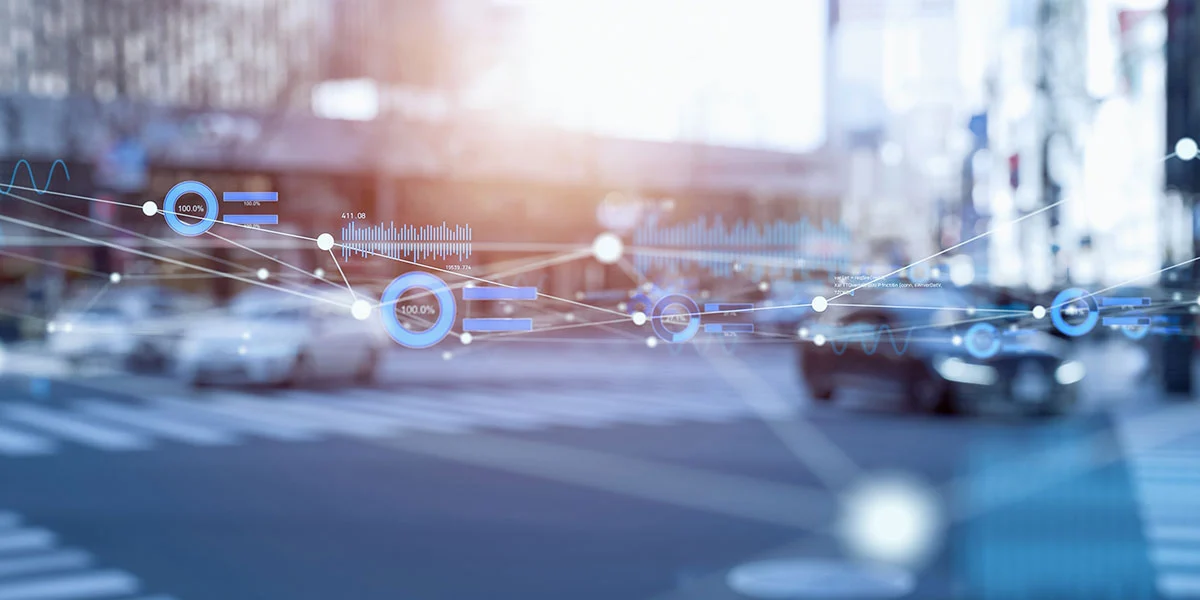
Jul 26, 2023
Blog Digital World Industry Insight into IoT Sensors
Sensors are integral to the Internet of Things (IoT). They measure, track, and transmit data from machines, monitoring changes in pressure, motion, temperature, light and sound. Sensors allow companies to run predictive maintenance on machinery, stopping operational shutdowns before they occur.
As more industries tap into the potential of the IoT, the global market for sensors continues to climb. BCC Research predicts the market to reach heights of $249.6 billion by 2026, with growth at a compound annual growth rate (CAGR) of 9.8% from 2021-2026.
The significance of sensors is only increasing. Today, we’re exploring what the future holds for IoT sensors, examining the top trends gripping the industry.
The IoT is defined as a network of physical objects embedded with technology, which allows the internal states or the external environment to be communicated to another machine. Covering hardware, embedded software, communications services and information services, the IoT will grow rapidly, far exceeding the growth of other connected devices. With sensors laying at the heart of the IoT, growth for IoT sensors will be significant. BCC Research estimates sensors for the IoT will grow from $10.9 billion in 2021 to reach $36.6 billion by 2026, at a CAGR of 27.4% during the forecast period of 2021-2026.
A key application for IoT sensors will be connecting cities. The IoT is helping cities run more efficiently while also enhancing security and safety. Parking, lighting, traffic, buses and waste management can become optimized in connected cities, conserving energy by optimizing usage and power. Retail is another leading application for the IoT. It yields an easily quantified return on investment by helping retailers understand what factors influence shoppers to purchase. Other markets include manufacturing to maximize efficiencies and transportation to enhance customers’ experience and safety.
Sensors are the backbone and the key enablers of IoT applications. As the interface to the physical world, sensors are the key “things” in the Internet of Things.
For a company to succeed in this competitive market, an understanding of the size and growth rate of opportunities and the competitive atmosphere is necessary. BCC Research’s report on sensors is the ideal companion for those navigating this growing industry, and it will help prospective manufacturers, distributors and users understand and take advantage of this growing field.
The development of less-expensive, smarter and smaller sensors is a key market driver. Stringent government regulations and policies in developing smart cities offer new opportunities for the IoT sensor market – but amid the growth are some distinct hurdles.
Privacy and security issues are putting the brakes on the growth of IoT sensors. The devices and sensors involved in the IoT collect vast amounts of data – and the possibility to automatically identify objects could subsequently lead to automatic identification of an individual related to these objects. Information on individuals, their habits, locations, interests and other personal information stored for ease of use in systems could be revealed. Increased concerns relate to the failure of electronic identification and identify theft.
The Industrial Internet of Things (IIoT) cannot function without sensors to measure pressures, positions, temperatures and other vital production parameters. Continued innovation in sensor technologies is helping to fuel the expansion of IoT capabilities. Industrial applications are mature markets, focusing on high-end rather than high-volume production, as well as demanding sensors that can be used in harsh environments with high reliability, precision and miniaturization. IIoT sensors are helping to enable predictive maintenance, asset monitoring and data analytics for production efficiency gains.
Sensors are increasingly used for measurement and analytical instrumentation, as well as to control industrial settings in process automation, systems for process control, process safety, operations management and asset optimization.
Sensors collect information about the physical quantities and surrounding occurrences. However, converting these data into real actions necessitates the analysis of inputs from a variety of sensors, including sensor networks. AI can help with this, and neural networks, machine learning and data aggregation methods have all been used in the past. These technologies can now be used in a variety of IoT architectures that include actuator and sensor nodes that connect and form networks. These are typically independent networks that adjust to a variety of environments, resulting in intelligent IoT networks. Without AI algorithms at their foundation, these smart IoT systems would be impossible to implement.
Sensors play an important part in our daily lives and are an important component of IoT-based systems, because they allow the IoT to gather information and make intelligent choices. A broad range of AI-based sensors are supporting recent breakthroughs in IoT applications, systems and technology, notably industrial Cyber-Physical Systems (CPSs). Onboard cognition and the capacity to communicate collectively or through the Internet are common characteristics of these intelligent AI-based sensors.
Sensors embedded in nodes must be smart, efficient, dependable, context-aware, accurate, and linked in order to accomplish the significant level of automation necessary in today’s smart IoT applications. Sensors must also be durable, secure and private for people who interact with them. New sensor abilities based on innovative AI technologies have emerged recently, with the potential to identify, detect, and avert system failures as well as discover new trends. They can stimulate innovation process, improve operational level and open up fresh business models by combining knowledge from complicated sensor datasets.
Due to the forced shutdown of gyms and other training centers as a result of the COVID-19 pandemic, home-based training regimens became highly popular. Millions around the world have switched to self-guided training in their residences or in their communities. Most of these activities are done with the help of a wearable activity tracker that records biometric data and keeps track of progress.
With self-learning AI software, Bosch Sensortec’s AI sensor systems was launched as a perfect all-in-one option for always-on sensing applications, enabling a wide range of applications such as pedestrian placement, fitness tracking, orientation prediction and machine learning analytics. The sensor’s self-learning AI software allows developers of hearable and wearable devices to give highly tailored fitness tracking. It is capable of learning any new fitness routine that is based on cyclical patterns, repeated, and recognizes and adjusts to a broad range of motions. As a result, users can be both instructors and students at the same time.

Olivia Lowden is a Junior Copywriter at BCC Research, writing content on everything from sustainability to fintech. Before beginning at BCC Research, she received a First-Class Master’s Degree in Creative Writing from the University of East Anglia.

From smartphones to satellites, antennas play a vital role in enabling the seaml...

Introduction Artificial Intelligence (AI) and the Internet of Things (IoT) are r...

We are your trusted research partner, providing actionable insights and custom consulting across life sciences, advanced materials, and technology. Allow BCC Research to nurture your smartest business decisions today, tomorrow, and beyond.
Contact UsBCC Research provides objective, unbiased measurement and assessment of market opportunities with detailed market research reports. Our experienced industry analysts assess growth opportunities, market sizing, technologies, applications, supply chains and companies with the singular goal of helping you make informed business decisions, free of noise and hype.